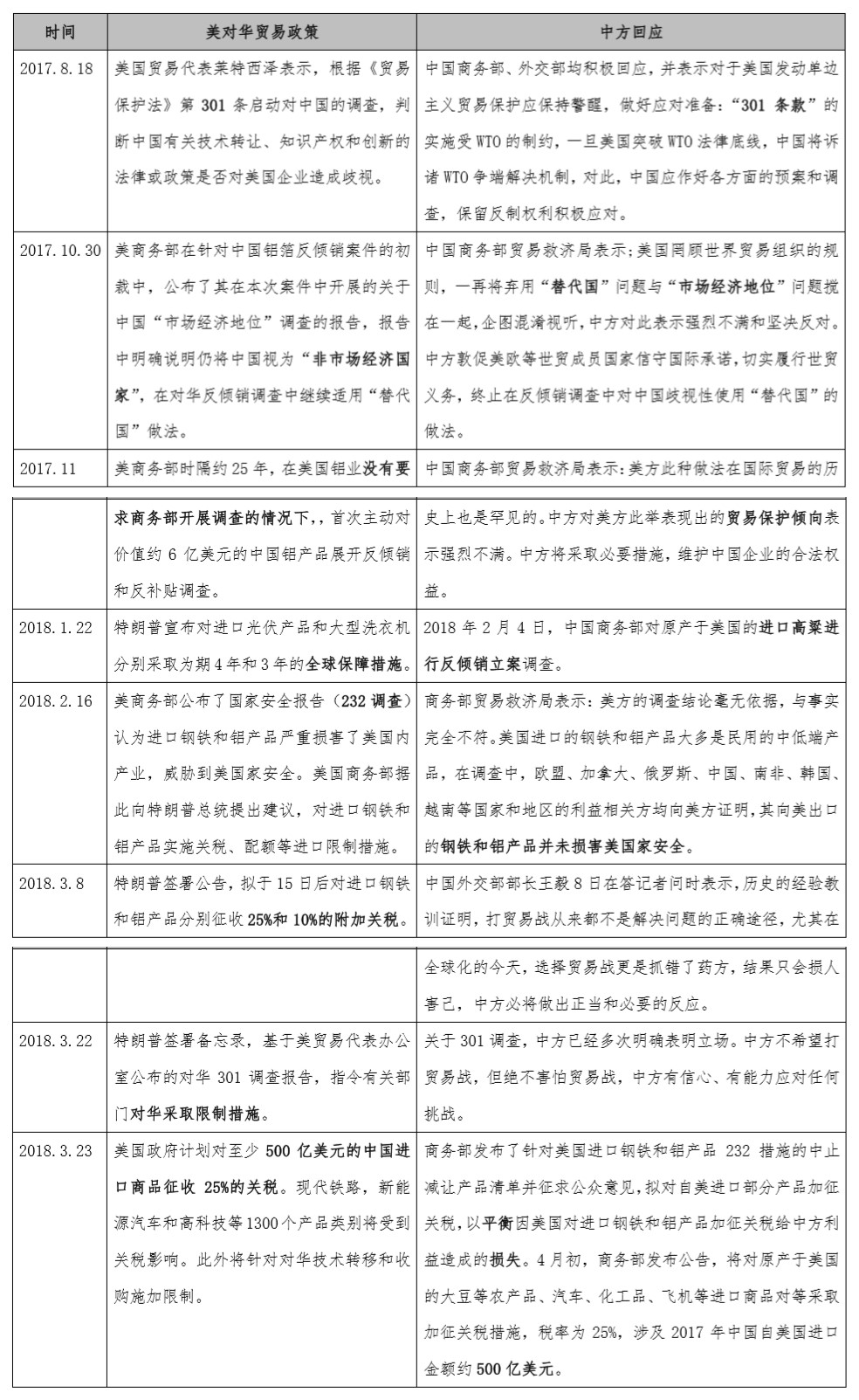Against the background of the slow recovery of the global economy, after Trump took office, the United States immediately withdrew from the TPP (Trans-Pacific Partnership Agreement) and then renegotiated NAFTA (North American Free Trade Agreement). Trump also emphasized issues such as reducing trade deficits when visiting major trading partners such as China, Germany, Japan, and South Korea, which shows that the United States’ trade protection tendency is gradually increasing.
As far as China is concerned, Trump criticized China’s huge trade surplus with the United States during the campaign, accused China of currency manipulation, and even stated that he would impose a 45% tariff on Chinese imported goods after being elected. Although Trump softened his attitude towards China when he took office and did not immediately launch a trade investigation into China, as Trump has been in power for more than half a year, the U.S. trade investigation into China has been rapidly launched.
In mid-to-late August 2017, the “301 investigation” launched by the United States against China mainly focused on technology and intellectual property rights; in October, the United States stated that it did not recognize China’s market economy status; in mid-February 2018, the United States imposed restrictions on the import of steel and aluminum products. The “232 Investigation” report was released, and high tariffs will be imposed on steel and aluminum products exported from China. The United States has many dissatisfactions with China in terms of technology and intellectual property rights. Sino-US trade frictions will most likely escalate, and the risk of trade wars is likely to intensify. Since March, the area of Sino-US trade friction has expanded, and the results of the “301” investigation may cause the trade war to spread. From 2002 to 2009, the industries in China that were investigated by the United States for anti-dumping and anti-dumping measures and special safeguard measures were mainly textiles, chemicals, metal manufacturing and machinery. With the changes in the industrial and trade structures of China and the United States, the textile industry is no longer a Chinese industry. An important area of US trade friction. However, China’s electrical equipment, machinery, steel, non-ferrous metal processing, plastics and rubber, chemical and other industries are still the focus of the United States’ trade remedy investigations against China.
On March 21, Geneva time, the WTO released the report of the expert panel on China’s case against the United States for the enforcement of countervailing measures (DS437), ruling that all 11 US countervailing measures involved in the case violated WTO rules and required the US to correct its illegal measures. The Ministry of Commerce said: The United States still ignores multilateral rules and continues to use illegal practices in the process of implementing WTO rulings. The repeated abuse of trade remedy measures has seriously damaged the fairness and impartiality of the international trade environment and weakened the stability of the multilateral trading system.
In June last year, the United States launched an anti-dumping and countervailing investigation against Chinese polyester staple fiber. The tax number involved was 5503200025, and the amount involved was approximately US$80 million. The Chamber of Commerce held an early warning meeting in early June and successfully organized three companies (Huahong, Sanfangxiang, and Huaxi Village) to participate in a no-harm defense. In January 2018, American lawyers participated in the hearing of this case on behalf of the industry involved in our case. At the hearing, we stated our position and submitted detailed preliminary defense opinions. In early March, the responding companies underwent on-site inspection and are awaiting the final results.
Currently, the U.S. apparel and footwear industry has joined a growing number of U.S. companies in opposing U.S. President Trump’s tariffs on Chinese goods. The American Apparel and Footwear Association (AAFA) and 16 other relevant business groups wrote to the White House calling on the United States not to impose tariffs on Chinese goods. Many AAFA members rely on imports. In addition, more than 80 footwear companies have written letters opposing the tariffs.
A summary of recent U.S. trade policy trends toward China is as follows:

(Title: U.S. trade protection stick waved, Sino-U.S. friction areas have expanded)
AAA Flame Retardant Fabric Network KY, 7II56U65






